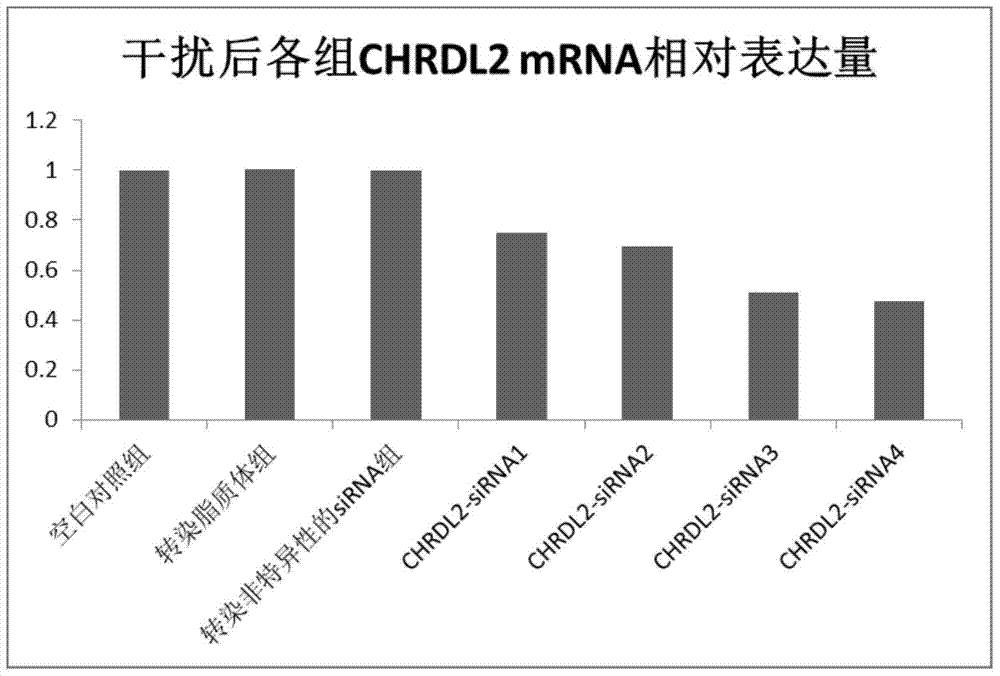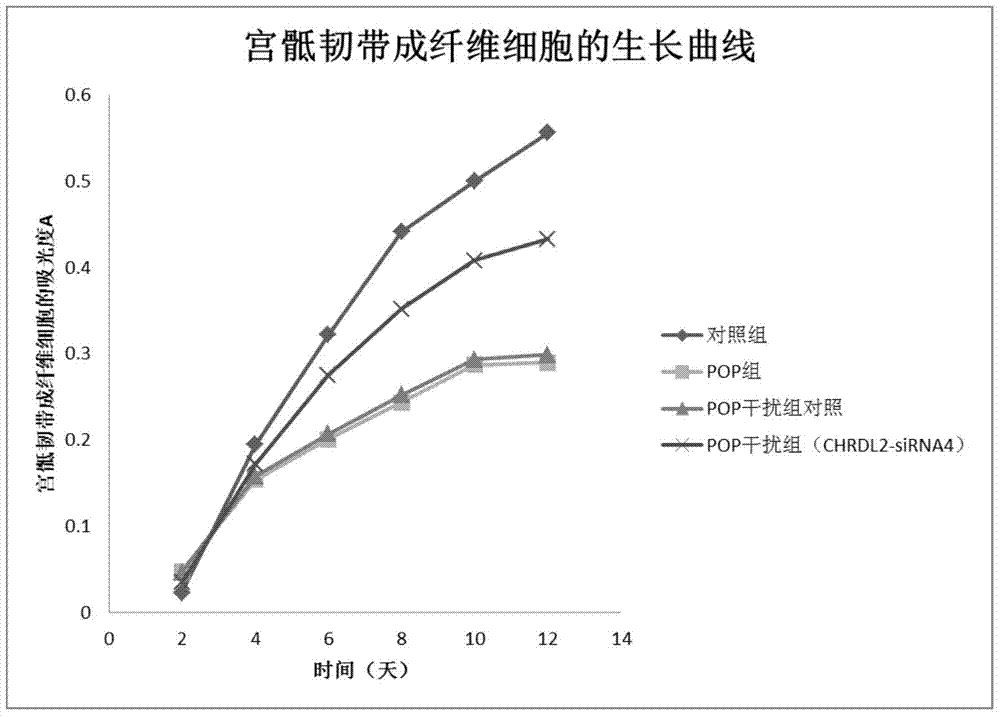Highly expressed genes in pelvic prolapse and their application
A pelvic prolapse and genetic technology, applied in the field of biomedicine, can solve the problems of inability to fully elucidate the mechanism of pelvic floor support tissue damage, unknown etiology and pathogenesis, and unclear pathogenesis, achieving good application prospects and simplifying quantitative detection Clear process and results
- Summary
- Abstract
- Description
- Claims
- Application Information
AI Technical Summary
Problems solved by technology
Method used
Image
Examples
Embodiment 1
[0034] The collection of embodiment 1 case
[0035] From September 2012 to December 2013, a total of 9 POP patients who visited the Department of Obstetrics and Gynecology of Union Medical College Hospital were collected. A total of 3 cases were collected using age and place of residence as matching factors. The uterosacral ligament tissue samples of all subjects were obtained, numbered and stored in a -80°C low-temperature refrigerator.
[0036] Inclusion criteria for POP group: a. POP-Q score ≥ II degree after gynecological examination;
[0037] b. Continuously living in the Beijing area;
[0038] c. At least one childbirth history.
[0039] Exclusion criteria: a. Patients who received hormone replacement therapy in the past 3 months;
[0040] b. Patients with connective tissue diseases (rheumatoid arthritis, systemic lupus erythematosus, polymyositis, Marfan syndrome, Eydown syndrome);
[0041] c. Pregnant patients;
[0042] d. The patient refuses to join;
[0043] e...
Embodiment 2
[0055] Example 2 High-throughput sequencing and analysis
[0056] RNA extraction is performed on the tissue, followed by agarose gel electrophoresis after RNA extraction. From the results of electrophoresis, it can be preliminarily judged whether the quality of the extracted RNA sample is qualified or not, and whether it can be used for further transcriptome analysis. Then, the extraction of RNA samples was detected by NanoDrop1000 spectrophotometer, and the sample requirements for RNA-seq sequencing: OD260 / OD280 was 1.8-2.2.
[0057] The sequencing platform is the HiSeq 2500 high-throughput sequencing platform of Illumina, which performs high-throughput transcriptome deep sequencing. After sequencing, we use Fast-QC (http: / / www.bioinformatics.babraham.ac.uk / projects / fastqc / ) The software evaluates the quality of sequencing data as a whole, including base quality value distribution, quality value position distribution, GC content, PCR duplication content, kmer frequency, etc. ...
Embodiment 3
[0058] Example 3 CHRDL2 gene expression in pelvic prolapse patients and controls in uterosacral ligament tissue
[0059] 1. Materials and methods
[0060] 1. Materials
[0061] The uterosacral ligament tissues of 35 cases of pelvic prolapse patients and 5 cases of control uterosacral ligament tissues were selected and grouped and numbered. The control group was patients with benign gynecological diseases undergoing laparotomy or vaginal hysterectomy, pelvic organ prolapse was ruled out by vaginal examination, and no urinary incontinence symptoms. Of the 35 patients with pelvic prolapse, 17 were grade II, 8 were grade III, and 10 were grade IV.
[0062] 2. Method
[0063] 2.1 Extraction of total RNA from uterosacral ligament tissues of patients with pelvic prolapse and controls
[0064] use Reagent (invitrogen, Cat. No. 15596-018) was used to extract sample RNA, and the experimental operation was carried out according to the product manual. The specific operation was as f...
PUM
 Login to View More
Login to View More Abstract
Description
Claims
Application Information
 Login to View More
Login to View More - R&D
- Intellectual Property
- Life Sciences
- Materials
- Tech Scout
- Unparalleled Data Quality
- Higher Quality Content
- 60% Fewer Hallucinations
Browse by: Latest US Patents, China's latest patents, Technical Efficacy Thesaurus, Application Domain, Technology Topic, Popular Technical Reports.
© 2025 PatSnap. All rights reserved.Legal|Privacy policy|Modern Slavery Act Transparency Statement|Sitemap|About US| Contact US: help@patsnap.com



